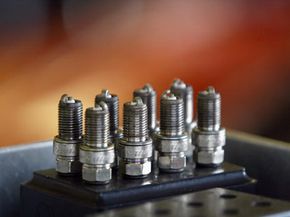As engines and their electronics become more complex, one of the few things left to hobbyists and auto enthusiasts who like a little grease under their fingernails is the ability to change their spark plugs. Although just about every other car repair out there takes a code reader and a college degree to diagnose and fix, spark plugs remain accessible and easy to understand.
The first reliable spark plug was invented in 1903 by Oliver Lodge. They're aptly named as well; spark plugs are simply insulated plugs that are screwed into an internal combustion engine's cylinder head to deliver the spark that ignites the mixture of air and fuel in the combustion chamber. Spark plugs also transfer heat away from the combustion chamber.
Advertisement
Basically, this is what happens: The spark plug sits at the top of the cylinder head. The piston first travels down the cylinder, drawing in a mixture of fuel and air. The piston then goes back up toward the spark plug, compressing the mixture. At the very last second, when the piston is at its fullest reach or top dead center (TDC), the spark plug sparks and ignites the mixture. The piston is forced back down to create power for the vehicle, then pushed back up again to clear out the exhaust. At that point, the process starts all over again.
A four-cylinder car will have four spark plugs; a six-cylinder car will have six and so on (though a HEMI engine has two plugs per cylinder). Now that we've got the basics down, let's talk about the kinds of spark plugs on the shelves at your local parts shop.
Advertisement

